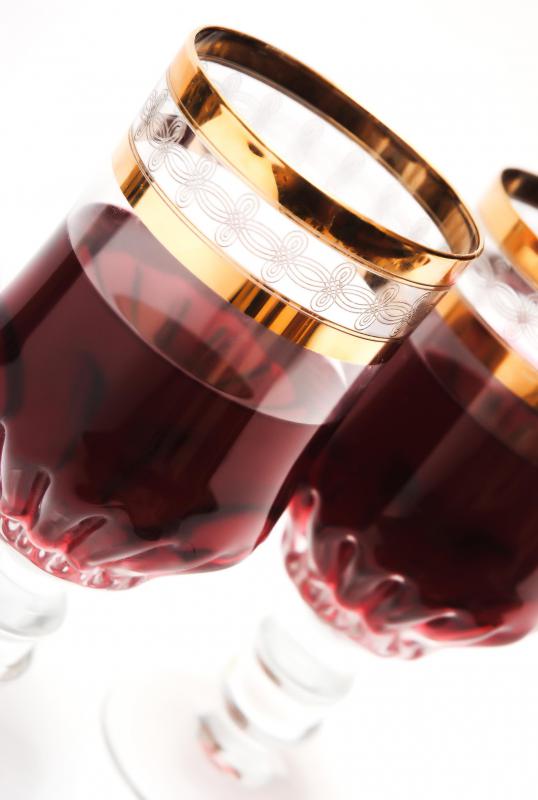At WiseGEEK, we're committed to delivering accurate, trustworthy information. Our expert-authored content is rigorously fact-checked and sourced from credible authorities. Discover how we uphold the highest standards in providing you with reliable knowledge.
What Is Proanthocyanidin?
Proanthocyanidin is a type of flavonoid found in the skin and seeds of fruits and a few vegetables, especially red or purple varieties; red-colored beans can also possess this flavonoid. Flavonoids are a class of chemical compounds with suspected antioxidant abilities; there are several subclasses of flavonoids, including tannins, which is the subclass to which proanthocyanidin belongs. Scientists consider proanthocyanidin molecules condensed tannins and believe eating foods high in condensed tannins might improve heart health and lower cancer risk.
Research suggests benefits from eating fruit containing condensed tannins go beyond just reducing heart disease and cancer risk. Other benefits, primarily obtained through the intake of foods and drinks rather than supplements, include lowering a person’s potential for blood clots, which can lead to a heart attack or stroke, and mitigating urinary infections. The antioxidant may also decrease rates of brain disease for people with consistent, long-term high blood sugar levels. Proanthocyanidin’s effectiveness is attributed to the compound’s ability to scavenge the body for free radicals and attack them.

Three kinds of proanthocyanidins exist: prodelphinidin, procyanidin and propelargonidin. Procyanidin, which is loaded with beneficial phytochemicals such as epicatechins and catechins, is believed to the most potent and abundant form of proanthocyanidin; it is found in most fruit and wines. In addition to vegetables and fruit, condensed tannins exist at high levels in teas and chocolate. In fact, pure, unsweetened chocolate from the cacao bean can contain up to three times as many condensed tannins as fruit selections. Powdered cocoa and liqueur made with chocolate also possess condensed tannins.

Types of fruits with high levels of proanthocyanidin include cranberries, apples, grapes and persimmons. Blueberries, black plums and blackberries are additional sources. Among vegetables, eggplant has traces of the antioxidant. Lab analysis shows most vegetables have undetected levels of condensed tannins.
Fava and kidney are the two types of beans with the highest proanthocyanidin content. Legumes such as hazelnuts, chestnuts and pistachios are another source of this flavonoid, if eaten raw. Certain spices can also be high in condensed tannins; these include cinnamon and, to a lesser extent, curry.

While fresh, raw fruits contain the highest levels of condensed tannins, fruits that are freeze-dried can also retain substantial proanthocyanidin content. Heating, canning and otherwise processing fruits generally reduce levels of condensed tannins severely. Not adversely affected by fermentation, proanthocyanidin exists in high quantities in red table wines. Juices, such as apple juice and grape juice, have moderate levels of the antioxidant-fighting chemical if the juice was manufactured with the whole fruit, including the skin.
AS FEATURED ON:
AS FEATURED ON:


















Discuss this Article
Post your comments